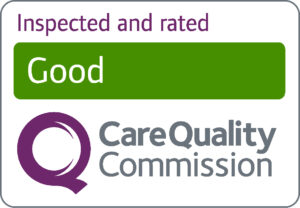We offer antenatal classes that cover all the topics below and more.
Vaginal birth after caesarean section (VBAC)
Birth options
What is VBAC?
VBAC stands for ‘vaginal birth after caesarean’. It is the term used when a woman gives birth vaginally, having had a caesarean section in the past. Vaginal birth includes normal delivery and birth assisted by forceps or ventouse (vacuum cup).
What is an ERCS?
ERCS stands for ‘elective (planned) repeat caesarean section’.
You will usually have the operation after 39 weeks of pregnancy. This is because babies born by caesarean section earlier than this are more likely to need to be admitted to the special care baby unit for help with their breathing.
For more information about planned caesarean section, come along to our planned caesarean section class.
In considering your options, your previous pregnancies and medical history are important factors to take into account.
Advantages of VBAC
Overall, VABC is successful 75% of the time when labour is spontaneous. This lowers to roughly 65% with induction of labour. If you have had a previous vaginal birth, either before or after your caesarean section, then 90% of the time women will have a vaginal birth.
Successful VBAC has fewer complications than ERCS.
If you do have a successful vaginal birth:
- you will have a greater chance of a vaginal birth in future pregnancies
- your recovery is likely to be quicker
- your stay in hospital may be shorter
- you are more likely to be able to have skin-to-skin contact with your baby immediately after birth and to be able to breastfeed successfully
- you will avoid the risks of an operation
- your baby will have less chance of initial breathing problems
- you may be more satisfied with your birth experience
Considerations of VBAC
You may need to have an emergency caesarean section during labour. This happens in 1 out of 4 women. This is only slightly higher than if you were labouring for the first time.
An emergency caesarean section carries more risks than a planned caesarean section.
You have a slightly higher chance of needing a blood transfusion compared with women who choose a planned second caesarean section.
The scar on your uterus may separate and/or tear (rupture). This can occur in 1 in 200 women. This risk increases by 2 to 3 times if your labour is induced.
Serious risk to your baby such as brain injury or stillbirth is higher than for a planned caesarean section but is the same as if you were labouring for the first time.
More information
VBAC and labour
You will be advised to give birth in hospital on the labour ward so that an emergency caesarean section can be carried out if necessary.
Once you are having regular contractions, you will recommend continuous monitoring of baby.
This is to ensure your baby’s wellbeing, since changes in the heartbeat pattern can be an early sign of problems. You can choose various options for pain relief, including an epidural.
If labour does not start, your doctor will discuss your birth options again with you. These may include:
- continue to wait for labour to start naturally
- induction of labour; this can increase the risk of scar rupture and lowers the chance of a successful VBAC
- repeat caesarean section
Decision making
You have lots of decisions to make during pregnancy, in labour and when you have had your baby. In order to make informed decisions about your care you can use a decision making tool like the BRAIN tool.
B Benefits. What are the benefits?
R Risks. What are the risks and considerations?
A Alternatives. What are the alternatives, and what are the risks and benefits of those?
I Intuition / information. How do you feel? Do you need more information?
N Nothing / not now. Do I need to decide now? What if I do nothing?
Wound care
Most women experience some discomfort for the first few days after a caesarean, and for some women the pain can last several weeks.
- gently clean and dry the wound every day
- wear loose, comfortable clothes and cotton underwear
- take a painkiller if the wound is sore – for most women, it’s better to take paracetamol or ibuprofen (but not aspirin) while you’re breastfeeding
Non-dissolvable stitches or staples will usually be taken out by your midwife after 5 to 7 days.
The wound in your tummy will eventually form a scar.
This will usually be a horizontal scar about 10 to 20cm long, just below your bikini line.
Contact your midwife or a GP straight away if you have any of the following symptoms after a caesarean:
- severe pain
- leaking urine
- pain when passing urine
- heavy vaginal bleeding
- your wound becomes more red, painful and swollen
- a discharge of pus or foul-smelling fluid from your wound
- a cough or shortness of breath
- swelling or pain in your lower leg
These symptoms may be the sign of an infection or blood clot, which should be treated as soon as possible.





